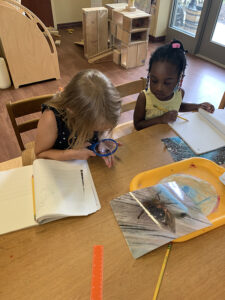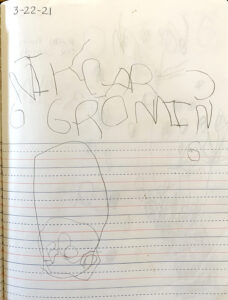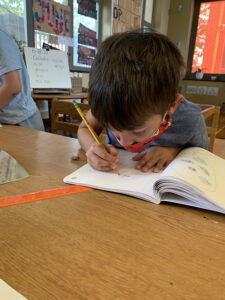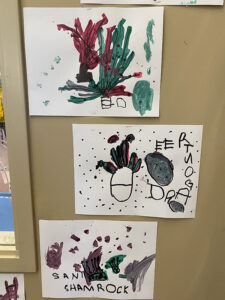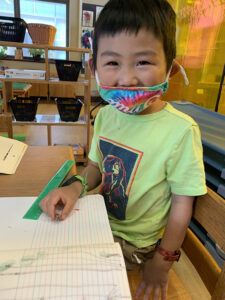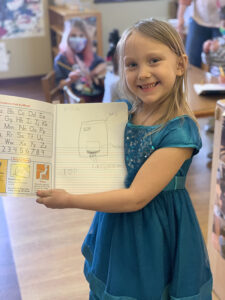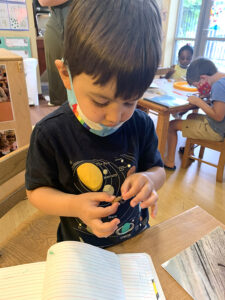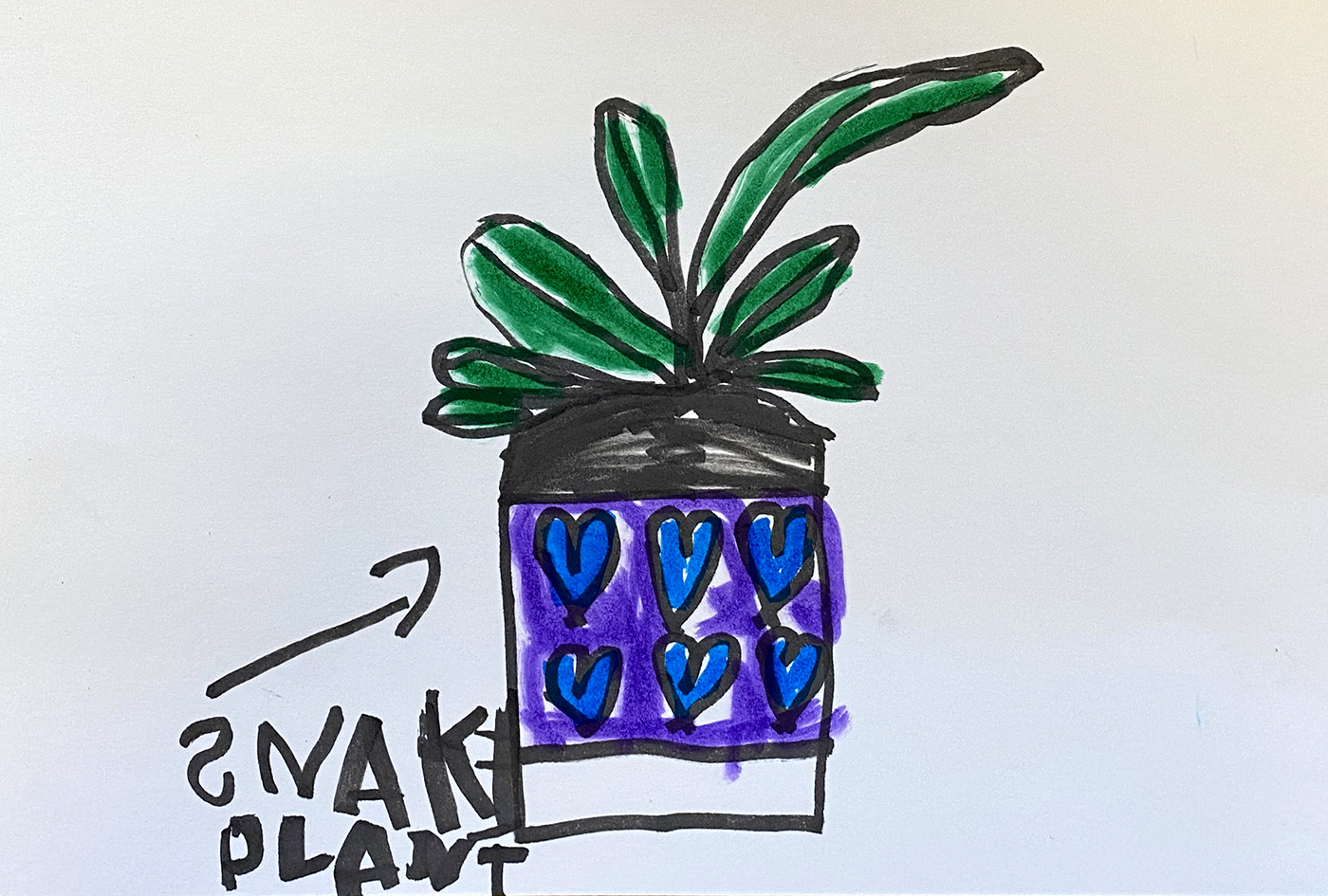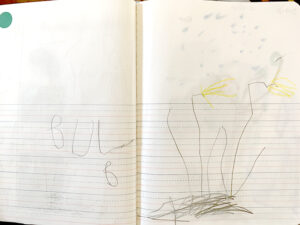The teachers discovered the children had a new interest in the plants in their room during late February. In addition to wanting to water and nurture them, the children began to observe and discuss the differences in each of the plants. The teachers wanted to encourage and support this natural curiosity, so they contacted a local plant store for donations of plants for the classroom and began to plan a curriculum around this new area of interest.
In the beginning, when the new plants were introduced, each teacher had a group of four children and would choose a plant to investigate. The group would discuss the color, size, and shape of leaves; the name of the plant; and what kind of care it needed. Black markers and white paper were provided to draw the plant on one day, and watercolors were provided to add the appropriate color for each plant the next day. Small white boards and dry erase markers were used to spell out the name of each group’s plant and the children were encouraged to write the names on their paintings.
As the weather began to get nicer, the teachers extended the planting idea to the outdoor garden. Green bean seeds were started in baggies and given time to sprout, each child had their own baggie and seeds. Journals were introduced as a way for children to document the progress of their seeds through writing and drawings. Vocabulary words were written on dry erase boards so that children could have a sense of autonomy in writing the words they wanted. For those children who weren’t quite ready to do that yet, the teachers wrote down the words that each child dictated.
When the sprouts were ready to be transplanted, the plants were transplanted to the outdoor garden space. The teachers continued to bring in seeds and plants from their own gardens at home to extend and support the interest of the children. This is when the outdoors became the new classroom. Not only did journaling continue for the flowers in the outdoors, but the children began noticing the insects and birds that were also around this area. Journaling became more detailed and vocabulary words were more plentiful. The teachers expanded the curriculum to reflect the ever-growing interest of the children in this outdoor classroom.
Information about birds and insects were added to the writing area where the journals were located so that children could use their journals independently during the day. Nests of Mourning Doves and Robins were observed around the gardens of the building. Cicada pictures and exoskeletons were brought in so that the children could explore these once in only 17 years creatures up close and personal!
When children’s areas of interest are developed and expanded upon, curriculum becomes richer and more meaningful to the learners. While the teachers started out with an art and science activity, it ended up, over time, encompassing nearly all areas of the early learning standards. Literacy and writing were evident in terms of reading books, learning new vocabulary words, and developing a stronger interest in writing. When the children practiced working together; listening to the ideas of others; and being able to use journaling as a way of expressing feelings, they were able to participate in ways to grow in social and emotional development. Working outside by digging, planting, and watering exposed the children to both gross and fine motor development. The teachers in are anxious to see where “natural” curiosity takes them next!
(Click images to enlarge.)
